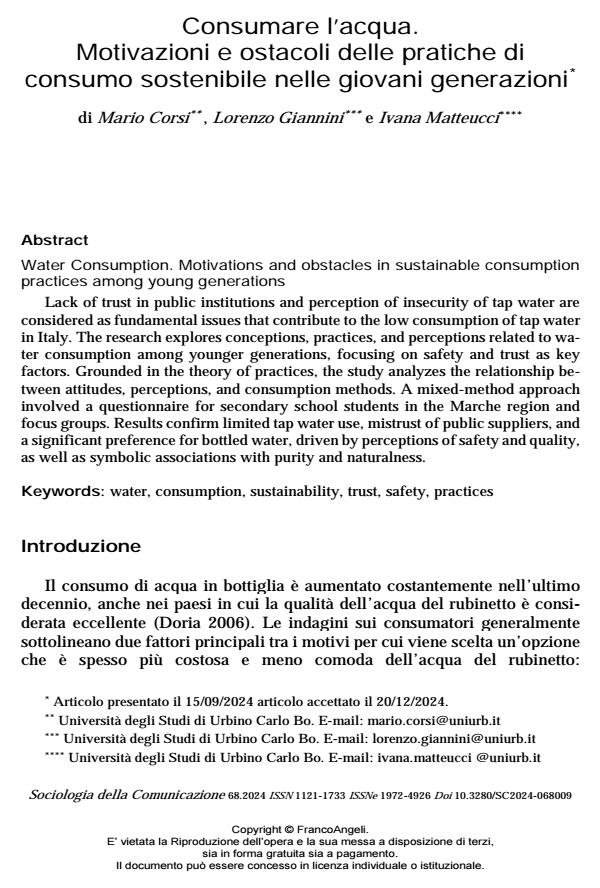Consumare l’acqua. Motivazioni e ostacoli delle pratiche di consumo sostenibile nelle giovani generazioni
Titolo Rivista SOCIOLOGIA DELLA COMUNICAZIONE
Autori/Curatori Mario Corsi, Lorenzo Giannini, Ivana Matteucci
Anno di pubblicazione 2025 Fascicolo 2024/68
Lingua Italiano Numero pagine 22 P. 119-140 Dimensione file 192 KB
DOI 10.3280/SC2024-068009
Il DOI è il codice a barre della proprietà intellettuale: per saperne di più
clicca qui
Qui sotto puoi vedere in anteprima la prima pagina di questo articolo.
Se questo articolo ti interessa, lo puoi acquistare (e scaricare in formato pdf) seguendo le facili indicazioni per acquistare il download credit. Acquista Download Credits per scaricare questo Articolo in formato PDF

FrancoAngeli è membro della Publishers International Linking Association, Inc (PILA)associazione indipendente e non profit per facilitare (attraverso i servizi tecnologici implementati da CrossRef.org) l’accesso degli studiosi ai contenuti digitali nelle pubblicazioni professionali e scientifiche
Lack of trust in public institutions and perception of insecurity of tap water are considered as fundamental issues that contribute to the low consumption of tap water in Italy. The research explores conceptions, practices, and perceptions related to water consumption among younger generations, focusing on safety and trust as key factors. Grounded in the theory of practices, the study analyzes the relationship between attitudes, perceptions, and consumption methods. A mixed-method approach involved a questionnaire for secondary school students in the Marche region and focus groups. Results confirm limited tap water use, mistrust of public suppliers, and a significant preference for bottled water, driven by perceptions of safety and quality, as well as symbolic associations with purity and naturalness.
Parole chiave:water, consumption, sustainability, trust, safety, practices
Mario Corsi, Lorenzo Giannini, Ivana Matteucci, Consumare l’acqua. Motivazioni e ostacoli delle pratiche di consumo sostenibile nelle giovani generazioni in "SOCIOLOGIA DELLA COMUNICAZIONE " 68/2024, pp 119-140, DOI: 10.3280/SC2024-068009